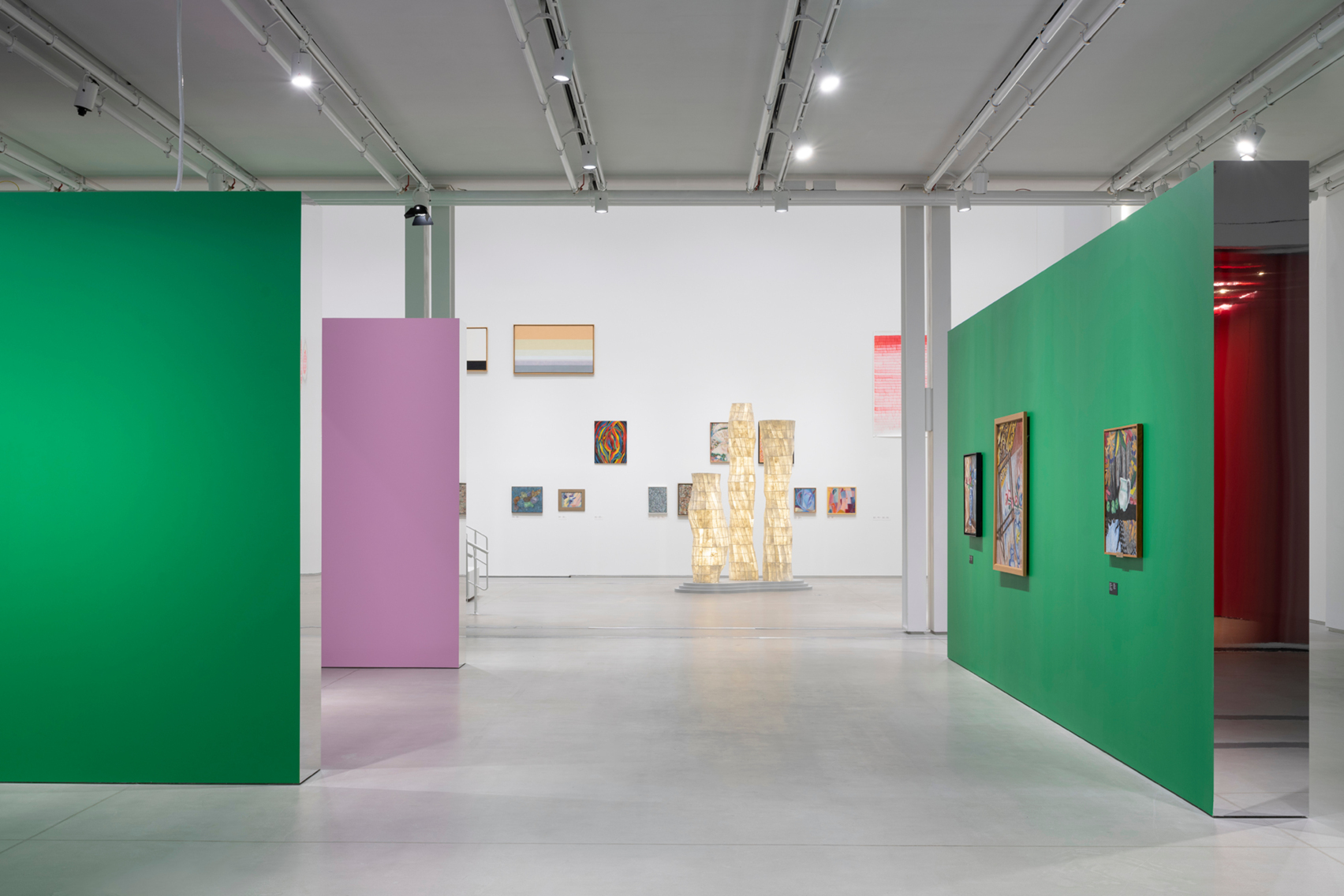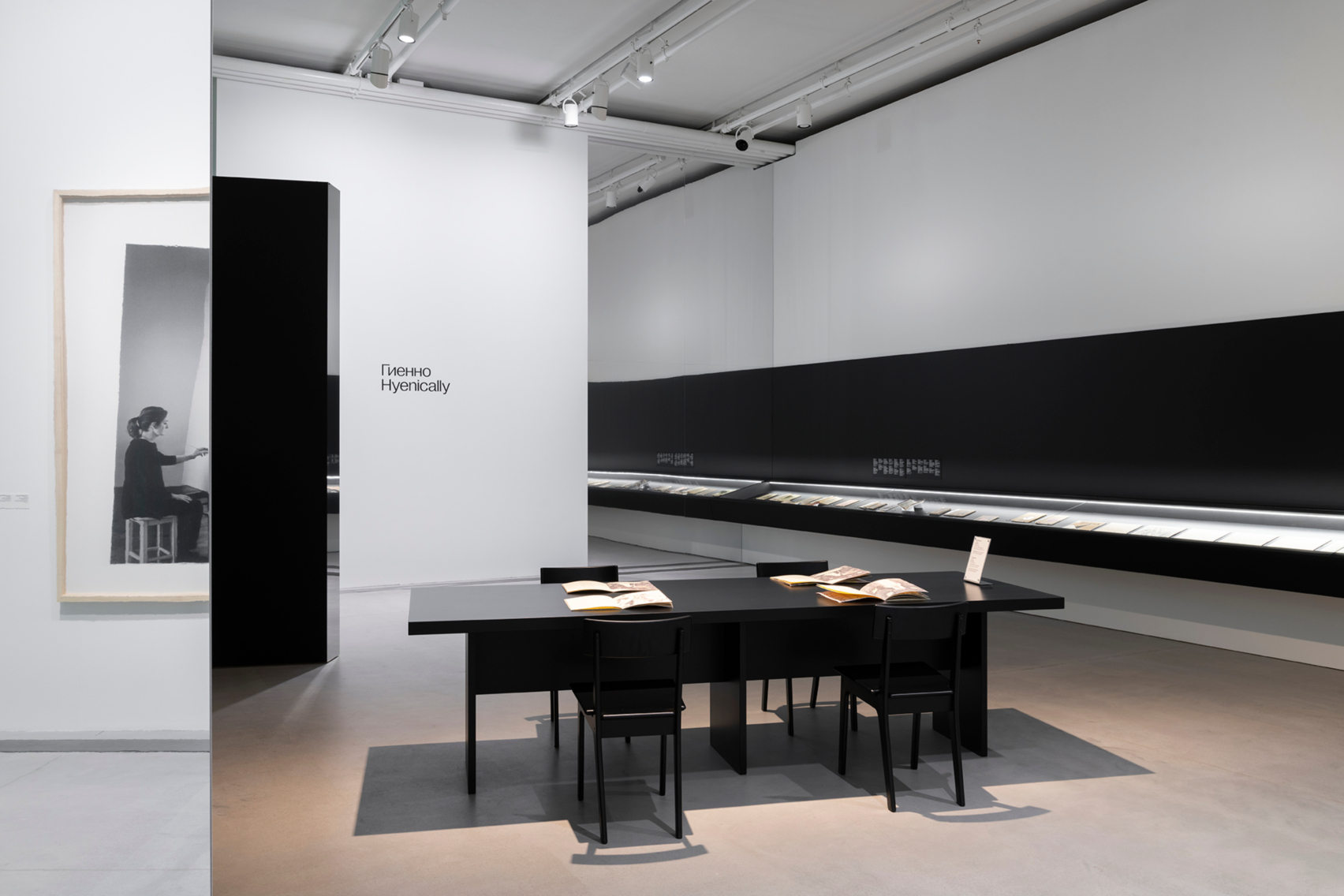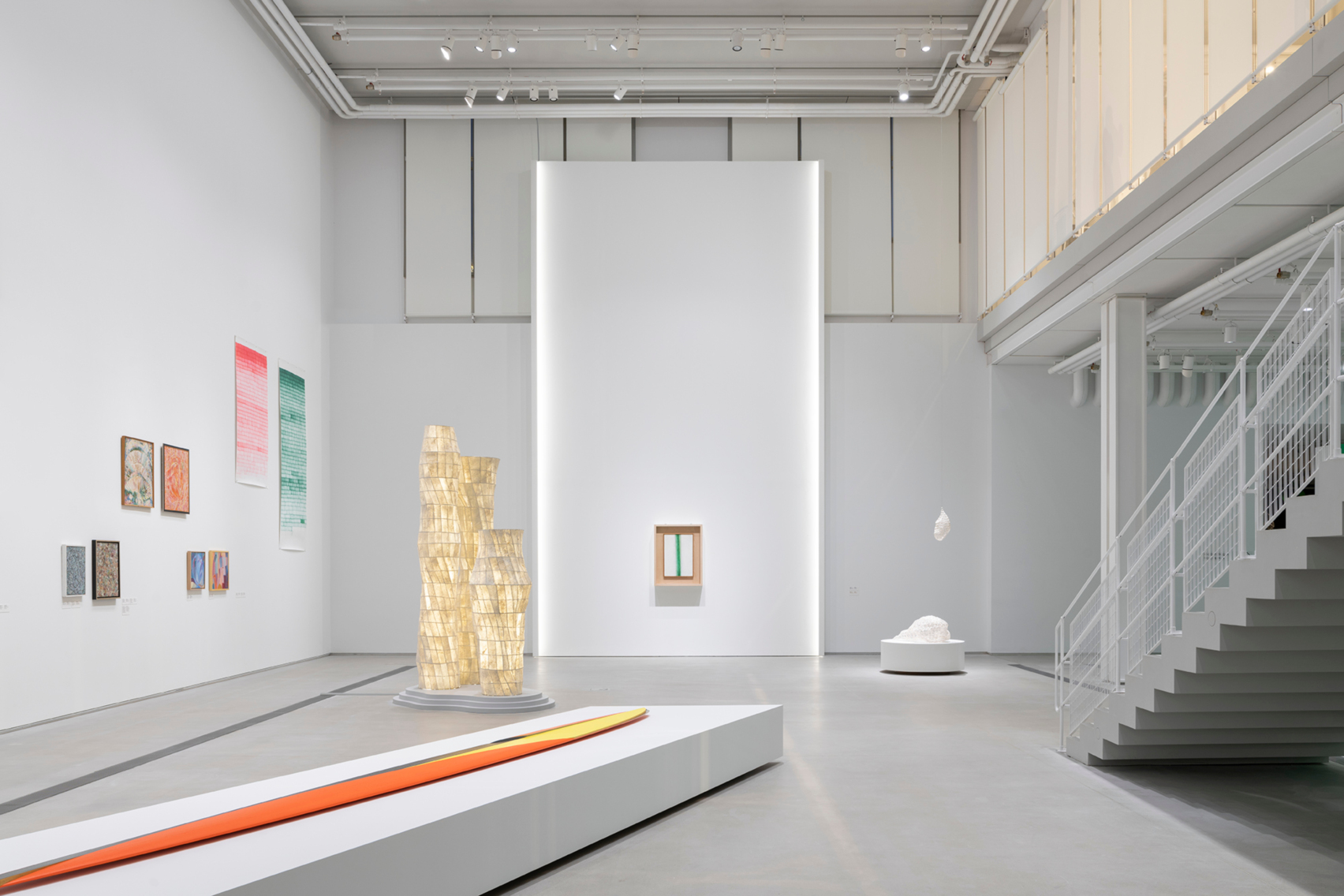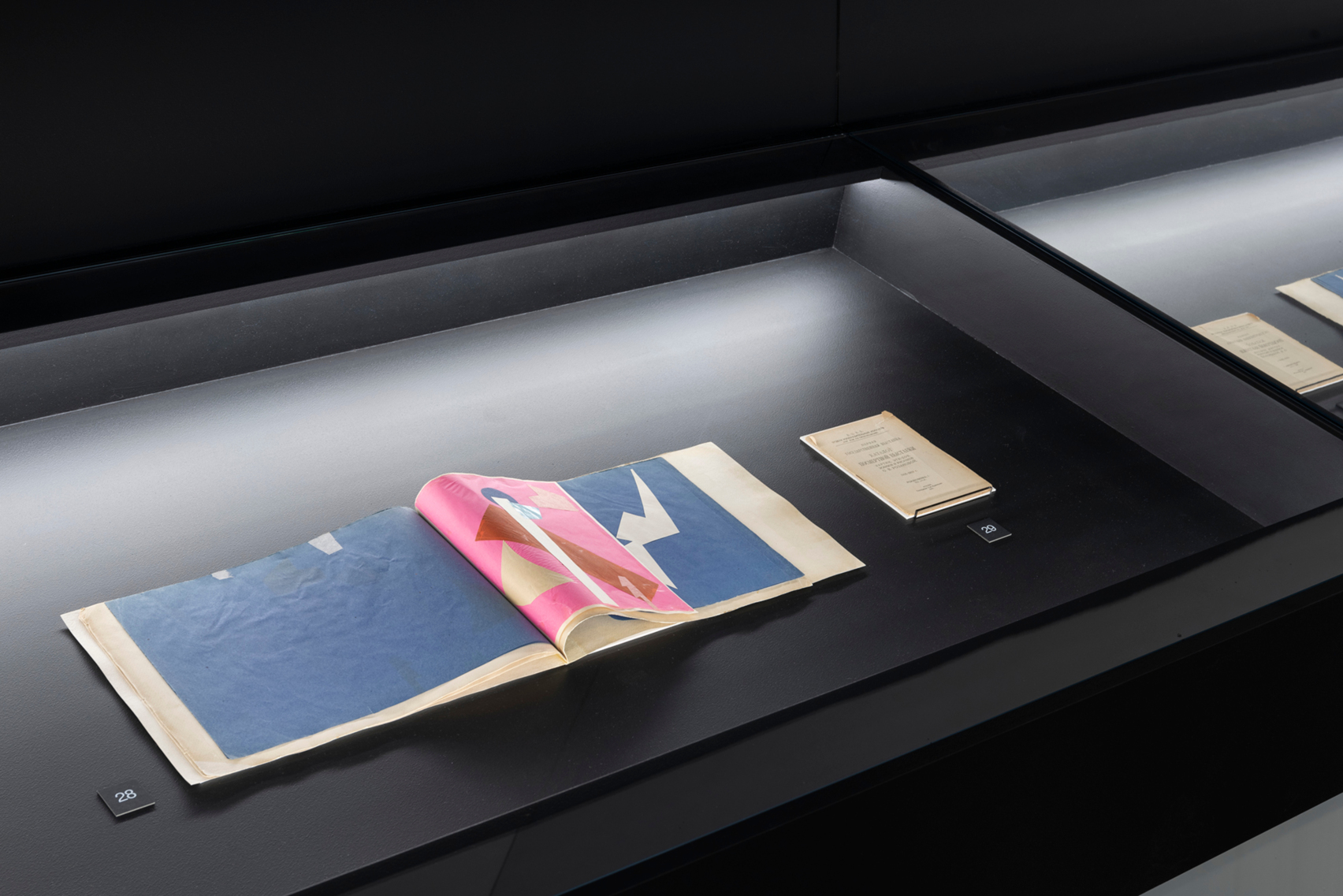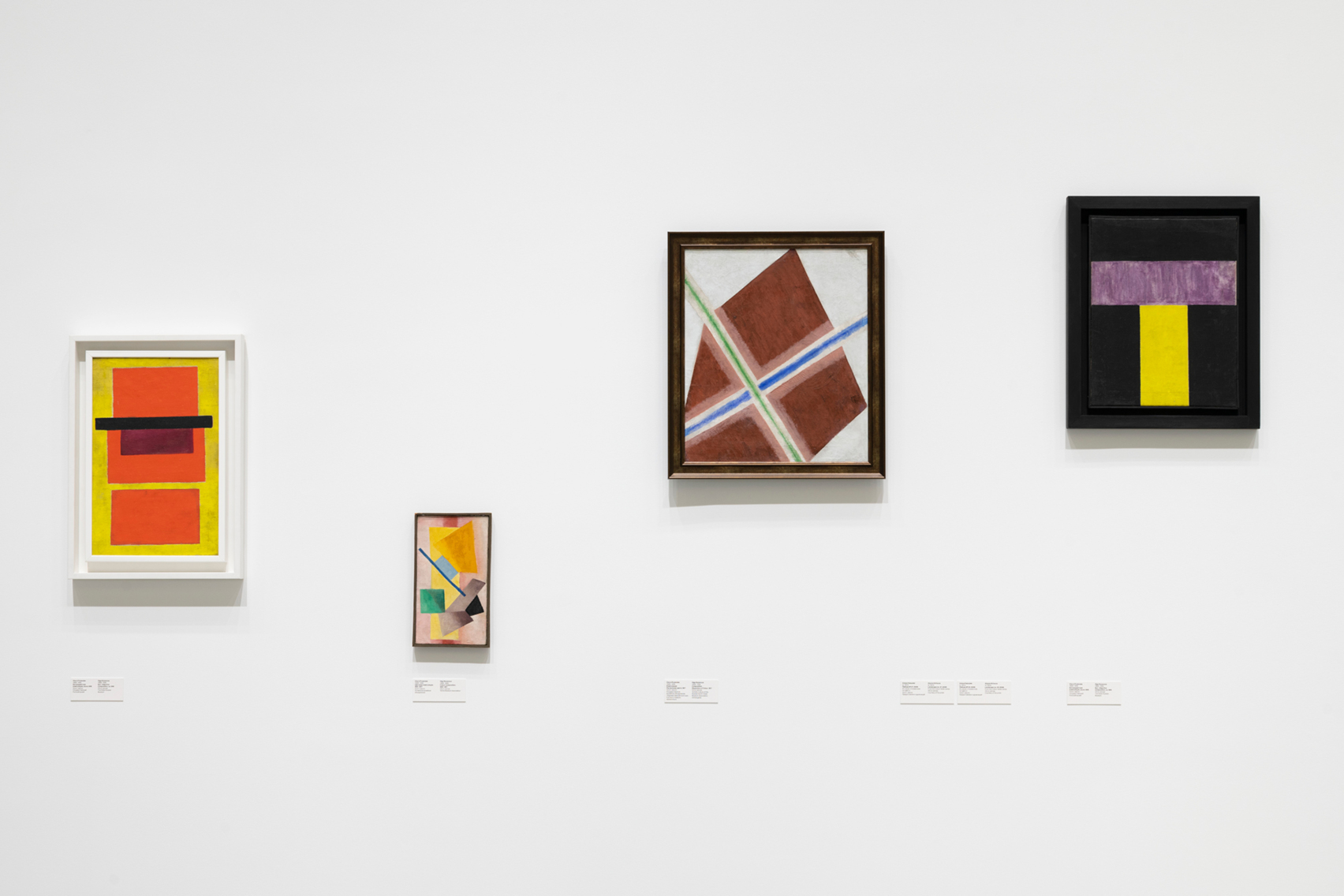An attempt to comprehend the singular avant-garde artist Olga Rozanova (1886–1918) by exploring not only her own oeuvre but also its possible echoes and resonances in Soviet unofficial art and the work of present-day female artists.
A Cup of Consonances. Approaching Rozanova
- Date:
- 10 Nov 2023–
28 Apr 2024
- Age restrictions
- 6+
Olga Rozanova’s artistic career lasted about eight years, tragically ending when she was only thirty-two. But this brief period was replete with profound stylistic transformations and keen intuitions that considerably shaped the later evolution of painting—tsvetopis (“colour painting”), “transfigured” colour, a radicalised Suprematism, translucent textures—and a revolution launched by a single green stripe*.
Olga Rozanova’s Green Stripe as well as her works on loan from the Slobodskoy Museum will only be on display until 28 March.

Photo: Daniel Annenkov
The historical comparisons suggested by this exhibition are largely due to Rozanova’s poetics, its simultaneous timelessness and rootedness in its own time. Rozanova can be seen as an exponent of Neo-Primitivism, Futurism, and Suprematism. She cannot, however, be contained by any of these movements—she was absorbed in her own exploration of colourism, composition, and rhythm, and by her thirst for incessant innovation. In a sense, we can speak of Rozanova’s aesthetic anarchism, as expressed in her eschewal of gurus, her unwillingness to heed a single method, and her work’s resistance to neat art-historical periodisation. Rozanova is a contemporary artist par excellence to the extent that her art evinces the “disjunctive unity” of different eras. This irresolution and unity in disjunction are typical of Rozanova’s artistic method, as embodied in the tension between stasis and dynamism, colour and geometry, solid colour compositions and whitewashed luminous colour—as, indeed, more generally, in the tension between figurativism and abstraction.
The Soviet unofficial art movement was, in fact, set in motion by abstraction. Interest in abstract art was fuelled by exhibitions of works by Picasso, Rothko, Pollock, and other great Western painters in Moscow in the late 1950s. It was at this same time that Soviet artists encountered the pre-Revolutionary Russian avant-garde in museum storerooms and in the collections of such private connoisseurs as George Costakis (1913–1990), whose own fascination with the virtuoso painters of the early twentieth century had been sparked by Rozanova’s work. During the Thaw, abstract art was regarded as the opposite of socialist realism, as a symbol of artistic and social freedom.
Two of the artists featured in this exhibition—Olga Potapova (1892–1971) and Lydia Masterkova (1927–2008)—were members of the Lianozovo Group (late 1950s–mid-1970s), a community of like-minded artists and poets in search of newness, which many of them associated with non-objective art. An interest in abstraction also marked the career of Efrosinia Yermilova-Platova (1895–1974), an artist who had started as a Neo-Primitivist and Cubo-Futurist. She joined the Soviet Union of Artists but was later expelled from it for “formalism” and over her refusal to paint portraits of Soviet leaders. In Leningrad, the hotbed of the city’s emerging spiritualized abstract art was the “home academy” run by Tatiana Glebova (1900–1985) and her husband Vladimir Sterligov (1904–1973). The links between all these artists and Rozanova’s art are as natural as they are arbitrary, although Soviet unofficial art has often been dubbed a “second” avant-garde. Likewise, Masterkova has often been called an “Amazon of the Russian avant-garde’s second wave,” as a nod to “Amazons of the Russian avant-garde,” an umbrella term for Rozanova and other early-twentieth-century female avant-garde artists.
The contemporary artists whose works are featured in this exhibition continue Rozanova’s formal explorations and expand on her discoveries. The group Malyshki 18:22 (Babes 18:22, founded in 2018) and Galina Andreeva (b. 1986) take their inspiration from two of Rozanova’s most famous pieces—Portrait of a Lady in Pink (Portrait of Anna Rozanova, the Artist’s Sister) (1912), and Green Stripe (1917), respectively—and invoke their motifs to discuss feminism and raise environmental concerns. Alexandra Paperno (b. 1978), Anna Kondratyeva (b. 1994) and Anna Titova (b. 1984) rethink the fundamental principles of Suprematism and Cubo-Futurism via dynamic lighting and the geometry of colour forms. Alyona Kirtsova (b. 1954) and Alexandra Galkina (b. 1982) delve into abstraction as an expressive language and subject for study, while Liza Neklessa (b. 1989) suggests once again seeking poetry’s assistance in working through a difficult historical moment.
The connection between Rozanova’s art and female nonconformist artists and women artists of later generations is sustained by echoes, reflections, and resonances. This project asks viewers to discover not strict visual rhymes, but more imprecise consonances, subtle and shaky parallels amongst different eras, genres, and media, between painting and poetry. It is thus no coincidence that lines from Rozanova’s poems have served as titles for this exhibition and its sections.
Photo: Daniel Annenkov
Curators
Andrey Parshikov, Karen Sarkisov, Elena Yaichnikova
Authors
Alyagrov (Roman Jakobson), Galina Andreeva, Efrosinya Ermilova-Platova, Alexandra Galkina, Iza Gentsken, Tatiana Glebova, Alena Kirtsova, Velimir Khlebnikov, Anna Kondratyeva, Alexei Kruchenykh, Malyshki 18:22 (Babes 18:22), Lydia Masterkova, Liza Neklessa, Alexandra Paperno, Bella Pokrova, Olga Potapova, Olga Rozanova, Anna Titova
Architect
Sasha Kim
Scientific advisor
Faina Balakhovskaya
Producers
Alisa Kekelidze, Angelina Vorona
The exhibition is organised in collaboration with
Archive of Alexander Rodchenko and Varvara Stepanova
“Artistic Culture of the Russian North” State Museum Association, Arkhangelsk
AZ Museum
Collection of Evgeny Nutovich
Collection of Timofei Gridnev and Q-ART Gallery
Collection of
Gazprombank Corporate Art Collection
Nizhny Novgorod State Art Museum
Nizhny Tagil Museum of Fine Arts
N+S Collection
Kostroma Museum Reserve
Kovalenko Krasnodar Regional Art Museum
Moscow Museum of Modern Art
Museum of Organic Culture, Kolomna
Pukhaev Family Collection
Rostov Kremlin State Museum Reserve
Samara Regional Art Museum
Saratov Radishchev State Art Museum
Slobodskoy Museum and Exhibition Centre
State Museum of Vladimir Mayakovsky
The State Art Museum of Khanty-Mansiysk
The State Russian Museum
The State Tretyakov Gallery
Totma Museum Association
Tyumen Museum and Education Association
Ulyanovsk Regional Art Museum
Yekaterinburg Museum of Fine Arts
Information Partners:



